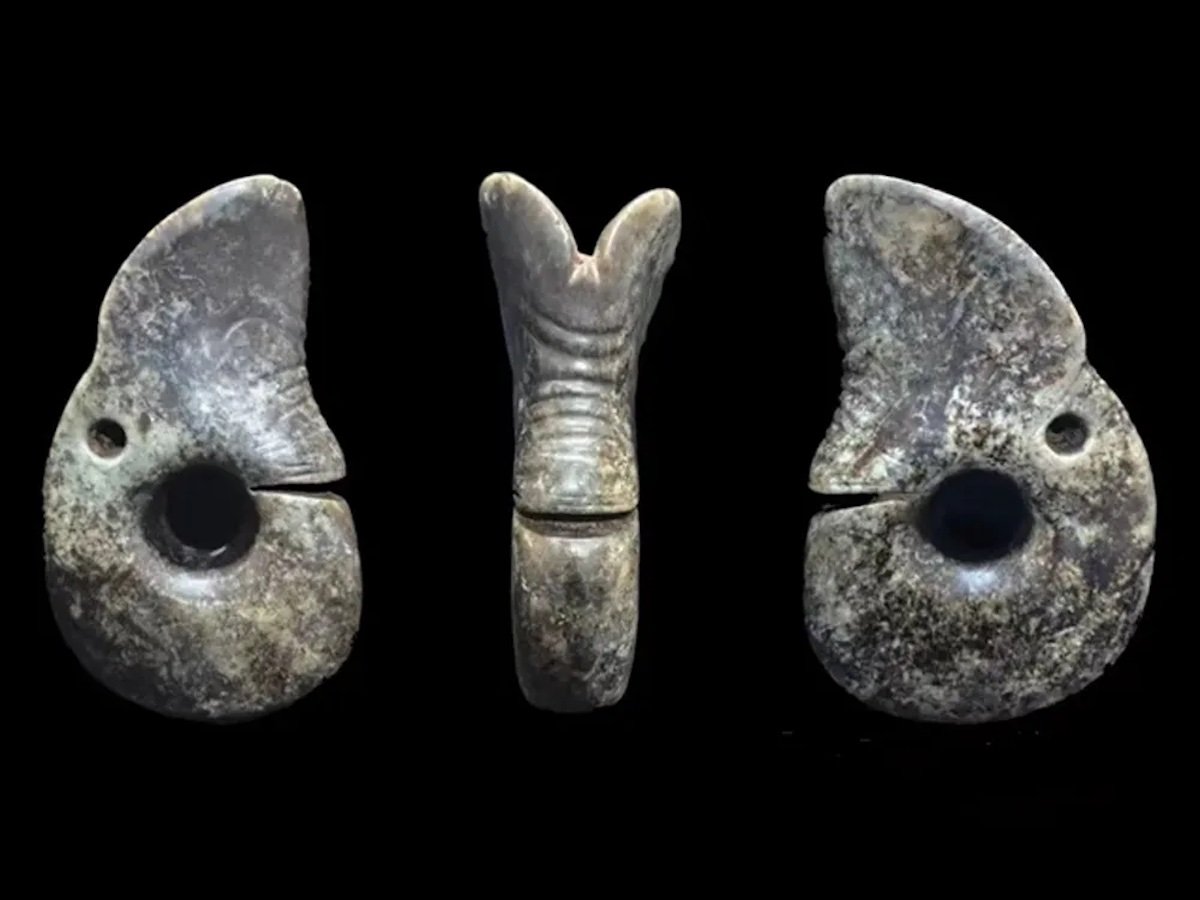
At a Neolithic site in northern China, archaeologists have unearthed a large jade dragon inside a 5,000-year-old tomb. The dragon was one of more than 100 artifacts that have been discovered in recent months at Yuanbaoshan, a site outside of the city of Chifeng in the province of Inner Mongolia.
The artifact, which is roughly the size of a pint glass, was found in a tomb complex that is circular and includes a square-shaped altar. Other artifacts found in the tomb include pieces of jade and painted pottery.
The site belongs to Hongshan culture, an agrarian Neolithic culture (millet was the grain of choice) that spread across large areas of China’s northeast between 4700 B.C.E. and 2900 B.C.E. It is considered among East Asia’s earliest complex societies and boasted rigid class systems with its elites interred in elaborate burial complexes, such as the one recently excavated at Yuanbaoshan.
Jade artifacts, which archaeologists believe were used in sacrifices were found at the Hongshan site in Yuanbaoshan. Photo: Xinhua / Alamy Stock Photo.
The announcement of the discoveries at Yuanbaoshan were made during a ceremony to celebrate the 70th anniversary of Hongshang’s naming—it literally means “red mountain,” a reference to the local landscape. To date, more than 1,000 Hongshan sites have been discovered with most spread across the provinces of Inner Mongolia and neighboring Liaoning.
The distinctive archaeological record of the Hongshan is of fine pottery, including painted pottery cylinders and figurines of pregnant women, and elaborately carved jade ornaments.
One of the most elaborate Hongshan sites so far excavated Niuheliang, which is nearly 100 miles south of Yuanbaoshan. A burial site scattered over a vast area, it features tombs similar in design to the one found at Yuanbaoshan, which archaeologists say demonstrates how Hongshang culture shared beliefs and practices over time and space.
Archaeologists working at a Hongshan stone tomb site in Inner Mongolia. Photo: Xinhua / Alamy Stock Photo.
Speaking to LiveScience, Gideon Shelach-Lavi, a professor of East Asian Studies at Jerusalem’s Hebrew University, said that though the discovery of the jade dragon was nice, it wasn’t particularly unique. “We do not really know what their meaning was during the Neolithic period so calling them ‘dragons’ is anachronistic,” Shelach-Lavi said.
Shelach-Lavi, who has previously carried out excavations at Chifeng, said the site was notably similar to Niuheliang. “It is a ritualistic structure that contains, among other things, graves of specific individuals.”